Morocco, officially the Kingdom of Morocco, is a North African country in the Maghreb region. It borders the Atlantic Ocean and Mediterranean Sea and shares land borders with Algeria and the disputed Western Sahara. With a population of approximately 37 million, its official religion is Islam, and the official languages are Arabic and Berber, with French and Moroccan Arabic widely spoken. Morocco's culture reflects Arab, Berber, African, and European influences. Rabat is the capital, while Casablanca is the largest city.
1900: Birth of Mohammed al-Mokhtar Soussi
Mohammed al-Mokhtar Soussi (1900–1963) played an important role in the transition to independence.
1906: Algeciras Conference resolves Moroccan crisis
In 1906, the matter of the crisis in Morocco was resolved at the Algeciras Conference.
1910: Birth of Allal al-Fassi
Allal al-Fassi (1910–1974) played an important role in the transition to independence.
1911: Agadir Crisis increases tensions
In 1911, the Agadir Crisis increased tensions between European powers.
1912: Treaty of Fez establishes French protectorate
In 1912, the Treaty of Fez made Morocco a protectorate of France and triggered the 1912 Fez riots.
1912: Protectorate era
The period between 1912 and 1956, during the Protectorate era, gave Moroccan intellectuals the opportunity to exchange and produce literary works freely with the contact of other Arabic literature and Europe.
1919: Birth of Abdelkrim Ghallab
Abdelkrim Ghallab (1919–2006) played an important role in the transition to independence.
August 1921: Spanish lost more than 13,000 soldiers
In July-August 1921, The Spanish lost more than 13,000 soldiers at Annual in the Rif War.
1922: Last Barbary Lion Shot in the Wild
In 1922, the last Barbary lion in the wild was shot in the Atlas Mountains.
1925: Abolition of slavery
In 1925, the institution of slavery was abolished in Morocco.
1926: Uprising in the Rif Mountains
Between 1921 and 1926, an uprising in the Rif Mountains, led by Abd el-Krim, led to the establishment of the Republic of the Rif.
1927: Suppression of the Riffi
In 1927, the Riffi were eventually suppressed by the Franco-Spanish military.
1943: Istiqlal Party founded
In 1943, the Istiqlal Party (Independence Party) was founded to press for independence.
1944: Establishment of the Moroccan Cinematographic Centre
In 1944, the Moroccan Cinematographic Centre (CCM), the nation's film regulatory agency, was established and studios were opened in Rabat.
1948: State of Israel founding
Before the founding of the State of Israel in 1948, Morocco had the largest Jewish community in the Muslim world, with about 265,000 Jews.
1948: Jewish population
In 1948, the Jewish minority population in Morocco peaked at 265,000.
1952: Othello won the Palme d'Or
In 1952, Orson Welles' "Othello" won the Palme d'Or at the Cannes Film Festival under the Moroccan flag.
1953: Exile of Sultan Mohammed V
In 1953, France exiled Sultan Mohammed V to Madagascar, sparking opposition to the French and Spanish protectorates.
1955: Mohammed V returns
In 1955, France allowed Mohammed V to return, leading to negotiations for Moroccan independence.
1955: Death of Mohammed Ben Brahim
Mohammed Ben Brahim (1897–1955) lived and wrote during the Protectorate (1912–1956), and its most important representative.
March 1956: Morocco regains independence from France
In March 1956, Morocco regained its independence from France as the Kingdom of Morocco.
1956: Morocco declared independence
After Morocco declared independence in 1956, French and Arabic became the main languages of administration and education.
1956: Moroccan National Theatre founded
The Moroccan National Theatre was founded in 1956.
1956: Protectorate era
The period between 1912 and 1956, during the Protectorate era, gave Moroccan intellectuals the opportunity to exchange and produce literary works freely with the contact of other Arabic literature and Europe.
1957: Mohammed becomes King
In 1957, Sultan Mohammed became King.
1957: Receipt of American aid
Morocco received more than $400 million in American aid between 1957 and 1963.
1960: Water Resources Availability
Between 1960 and 2020, the per capita availability of renewable water resources decreased from 2,560 m3 to about 620 m3 per person annually.
1960: Morocco's population
In 1960, Morocco's population was 11.6 million.
1960: Infant mortality rate
In 1960, the infant mortality rate in Morocco was 144 deaths per 1,000 live births.
March 1961: Hassan II becomes King
On March 3, 1961, upon the death of Mohammed V, Hassan II became King of Morocco.
1961: Start of Hassan II's Reign
Beginning in the early 1960s, under the leadership of Hassan II, Morocco had one of the worst human rights records in both Africa and the world.
1963: First general elections
In 1963, Morocco held its first general elections.
1963: Sand War fought
In 1963, the Sand War was fought between Algerian and Moroccan troops over Moroccan claims to parts of Algerian territory.
1963: Death of Mohammed al-Mokhtar Soussi
Mohammed al-Mokhtar Soussi (1900–1963) played an important role in the transition to independence.
1963: Receipt of American aid
Morocco received more than $400 million in American aid between 1957 and 1963.
February 1964: Peace agreement signed
In February 1964, a formal peace agreement was signed between Algeria and Morocco, following the Sand War.
1965: State of emergency declared
In 1965, Hassan declared a state of emergency and suspended parliament.
1965: King Suspends Constitution and Dissolves Parliament
In 1965, the King of Morocco suspended the constitution and dissolved the parliament, which was the only time this occurred after the constitution of 1996 theoretically allowed it.
1966: Fifth-largest recipient of US agricultural assistance
By 1966, Morocco was the fifth-largest recipient of US agricultural assistance.
1968: First Mediterranean Film Festival
In 1968, the first Mediterranean Film Festival was held in Tangier.
1969: Ifni returned to Morocco
In 1969, the Spanish enclave of Ifni in the south was returned to Morocco.
1971: Failed attempt to depose the king
In 1971, there was a failed attempt to depose the king and establish a republic.
1972: Second failed attempt to depose the king
In 1972, there was a second failed attempt to depose the king and establish a republic.
1973: Polisario movement formed
In 1973, the Polisario movement was formed with the aim of establishing an independent state in the Spanish Sahara.
1974: Death of Allal al-Fassi
Allal al-Fassi (1910–1974) played an important role in the transition to independence.
November 1975: "Green March" into Spanish Sahara
On November 6, 1975, King Hassan asked for volunteers to cross into the Spanish Sahara in the "Green March."
1975: Green March and Annexation of Western Sahara
In 1975, Morocco annexed the Western Sahara, a former Spanish colony, during the Green March.
1975: Morocco occupies Western Sahara
In 1975, Morocco occupied the disputed territory of Western Sahara, a region it has controlled since Spain agreed to decolonize and cede control. This led to conflict and unresolved sovereignty issues.
1975: Guerrilla war breaks out in Western Sahara
In 1975, after Spain agreed to decolonize Western Sahara and cede control to Morocco and Mauritania, a guerrilla war broke out between those powers and local inhabitants.
1976: Start of Western Sahara War
The Western Sahara War saw the Polisario Front battling both Morocco and Mauritania between 1976 and a ceasefire in 1991.
1979: Mauritania relinquishes claim to Western Sahara
In 1979, Mauritania relinquished its claim to the area of Western Sahara, but the war continued.
1980: Majorelle Garden Purchase
In 1980, the Majorelle botanical garden in Marrakesh was bought by fashion designer Yves Saint-Laurent and Pierre Bergé.
1982: Polisario claimed
Between 1982 and 1985, Polisario claimed to have killed more than 5,000 Moroccan soldiers .
1982: Admission of Sahrawi Arab Democratic Republic
In 1982, the African Union admitted the Sahrawi Arab Democratic Republic without conducting a referendum, leading to Morocco's withdrawal in 1984.
1982: First national festival of cinema
In 1982, the first national festival of cinema was held in Rabat.
1983: Elections cancelled
In 1983, Hassan cancelled planned elections amid political unrest and economic crisis.
1984: Morocco leaves Organisation of African Unity
In 1984, Morocco left the Organisation of African Unity in protest at the SADR's admission to the body.
1984: Morocco Withdraws from the African Union
In 1984, Morocco withdrew from the African Union after it admitted the Sahrawi Arab Democratic Republic in 1982 without conducting a referendum.
1984: Moroccan gold medals in track and field at Olympic Games
In 1984, at the Olympic Games, Nawal El Moutawakel won gold in the 400 metres hurdles, becoming the first woman from an Arab or Islamic country to win an Olympic gold medal. Saïd Aouita also won gold in the 5000 metres at the same games.
1985: Polisario claimed
Between 1982 and 1985, Polisario claimed to have killed more than 5,000 Moroccan soldiers.
1986: FIFA World Cup
In 1986, Morocco became the first Arab and African country to qualify for the second round of the FIFA World Cup.
1988: Diplomatic relations with Algeria restored
In 1988, diplomatic relations with Algeria were restored.
1990: Maternal mortality ratio
Based on World Bank data, the nation's maternal mortality ratio fell by 67% between 1990 and 2010.
1991: UN-monitored ceasefire begins in Western Sahara
In 1991, a UN-monitored ceasefire began in Western Sahara, but the territory's status remains undecided and ceasefire violations are reported.
1991: Ceasefire agreement reached in Western Sahara
In 1991, a ceasefire agreement was reached in Western Sahara, but the issue of sovereignty remained unresolved.
1991: Ceasefire in Western Sahara War
In 1991, a ceasefire was established between the Polisario Front, Morocco and Mauritania in the Western Sahara War.
1992: Expansion of Parliament's Powers
In 1992, the Parliament's powers were expanded, including budgetary matters, approving bills, questioning ministers.
1993: Privatisation Policy
In 1993, Morocco started a privatisation policy of certain economic sectors that were previously government-controlled.
1994: National Liquid Sanitation Master Plan
According to a study by the National Liquid Sanitation Master Plan (SNDAL) that started in 1994, only 15 of their 63 treatment plants were operational, and 95% of wastewater generated annually was discharged untreated.
1994: Border Closure with Algeria
In 1994, the border between Algeria and Morocco was closed, and it has remained closed since that year.
1995: Inauguration of Al-Akhawayn University
Al-Akhawayn University in Ifrane, the first English-language university in Northwest Africa, was inaugurated in 1995 with contributions from Saudi Arabia and the United States.
1996: Expansion of Parliament's Powers
In 1996, the Parliament's powers were expanded, including budgetary matters, approving bills, questioning ministers.
1996: Establishment of Bicameral Legislature
Since the 1996 constitutional reform, the bicameral legislature consists of two chambers.
1996: Constitutional allowance for King to terminate ministers
The constitution of 1996 theoretically allowed the king to terminate the tenure of any minister, and after consultation with the heads of the higher and lower Assemblies, to dissolve the parliament, suspend the constitution, call for new elections, or rule by decree.
March 1998: Coalition Government Formed
Following the March 1998 elections, a coalition government headed by Abderrahmane Youssoufi was formed, composed largely of ministers drawn from opposition parties.
1999: King Hassan II dies
In 1999, King Hassan II died and was succeeded by his son, Mohammed VI.
1999: Morocco fields first Davis Cup team
In 1999, Morocco fielded its first Davis Cup team, marking its entry into international tennis competition.
1999: Establishment of Equity and Reconciliation Commission
To examine abuses committed during the reign of King Hassan II (1961–1999), the government under King Mohammed VI established the Equity and Reconciliation Commission (IER).
2000: Infant mortality rate
In 2000, the infant mortality rate in Morocco was 42 deaths per 1,000 live births.
2000: Health expenditure per capita
Since 2000, health expenditure per capita (PPP) has steadily increased in Morocco.
2000: Start of Steady Growth
Starting in 2000, Morocco experienced government reforms and steady yearly economic growth in the region of 4–5%.
2001: First Marrakech International Film Festival
In 2001, the first Marrakech International Film Festival (FIFM) was held in Marrakesh.
October 2002: End of Coalition Government
In October 2002, the coalition of socialists, left-of-centre, and nationalist parties, which had been included in the government, ended.
2002: Cannabis Impact on GDP
According to the UN World Drugs Report, in 2002 cultivation and transformation of cannabis represents 0.57% of the national GDP of Morocco in 2004.
2002: Mohammed VI visits Western Sahara
In 2002, Mohammed VI paid a controversial visit to the Western Sahara.
2002: Resolution over Perejil island
In 2002, Morocco and Spain agreed to a US-brokered resolution over the disputed island of Perejil.
2002: Dispute with Spain over Perejil Island
In 2002, a dispute with Spain over the small island of Perejil arose, which brought attention to the issue of the sovereignty of Melilla and Ceuta.
2003: Year-on-year Growth
From 2003 to 2007, Morocco experienced a 4.9% year-on-year economic growth.
2003: ONEP Investment Program Start
From 2003 to 2017, an investment program of about MAD 15 billion was made to cover the centers managed by ONEP.
2003: Casablanca Bombings
In 2003, the Casablanca bombings occurred, killing 45 people.
2004: Foreign language speakers
According to the 2004 census, 2.19 million Moroccans spoke a foreign language other than French.
2004: Cannabis and National GDP
In 2004, according to the UN World Drugs Report, cultivation and transformation of cannabis represented 0.57% of Morocco's national GDP in 2002.
2004: Hicham El Guerrouj wins gold medals
In 2004, at the Summer Olympics, Hicham El Guerrouj won gold medals for Morocco in the 1500 metres and 5000 metres.
2004: Morocco Granted Major Non-NATO Ally Status by the US
In 2004, the George W. Bush administration granted Morocco the status of major non-NATO ally.
2005: Health insurance coverage
According to research published, in 2005, only 16% of citizens in Morocco had health insurance or coverage.
2005: National Sanitation Programme Approval
In 2005, a National Sanitation Programme was approved with the aims of treating 60% of collected wastewater and connecting 80% of urban households to sewers by 2020.
2005: Truth commission investigates human rights abuses
In 2005, a truth commission was set up to investigate human rights abuses during Hassan II's reign.
2005: Migrants storm Spanish enclaves
In 2005, dozens of African migrants stormed the borders of the Spanish enclaves of Melilla and Ceuta.
2005: Reforms to expand health insurance coverage
In 2005, the government of Morocco approved two reforms to expand health insurance coverage.
2005: First Technopark Established
Since the first technopark was established in Rabat in 2005, another was set up in Casablanca, followed by a third in Tangers in 2015.
September 2006: UNESCO 2006 Literacy Prize
In September 2006, UNESCO awarded Morocco the "UNESCO 2006 Literacy Prize".
2006: Death of Abdelkrim Ghallab
Abdelkrim Ghallab (1919–2006) played an important role in the transition to independence.
2006: Cannabis Resin Origin
According to a 2006 report from the French Ministry of the Interior, 80% of the cannabis resin (hashish) consumed in Europe came from the Rif region in Morocco.
2006: Growth in Adventure Tourism
As of 2006, activity and adventure tourism in the Atlas and Rif Mountains was the fastest growth area in Moroccan tourism.
2006: Spanish Premier visits enclaves
In 2006, the Spanish Premier Zapatero visited Spanish enclaves, the first Spanish leader in 25 years to make an official visit to the territories.
2006: Suggestion of Autonomous Status for Western Sahara
In 2006, the government of Morocco suggested autonomous status for the Western Sahara region through the Moroccan Royal Advisory Council for Saharan Affairs (CORCAS).
April 2007: Presentation of Autonomous Status Project to UN Security Council
In mid-April 2007, the Moroccan government presented the project for autonomous status for the Western Sahara region to the United Nations Security Council.
2007: Continued Economic Growth
From 2003-2007, Morocco saw continued economic growth, with a 4.9% year-on-year increase, contributing to a more robust economy. Also, by 2007, the steady yearly economic growth in the region of 4–5% that started in 2000, helped the Moroccan economy become much more robust compared to a few years earlier.
2007: Autonomy blueprint for Western Sahara unveiled
In 2007, Morocco unveiled an autonomy blueprint for Western Sahara to the United Nations.
2008: Badr Hari K-1 World Grand Prix Finalist
In 2008, Moroccan-Dutch Badr Hari became a K-1 World Grand Prix finalist.
2008: Coal Dependence
In 2008, approximately 56% of Morocco's electricity supply was provided by coal.
2008: Low Science and Technology Investment
In 2008, investment in science and technology was at US$620,000 which would rise to US$8.5 million in 2009.
May 2009: Science and Technology Investment Increase
In May 2009, Morocco's prime minister, Abbas El Fassi, announced that investment in science and technology would rise from US$620,000 in 2008 to US$8.5 million in 2009.
June 2009: Moroccan Innovation Strategy Launch
In June 2009, the Moroccan Innovation Strategy was launched at the country's first National Innovation Summit.
2009: Badr Hari K-1 World Grand Prix Finalist
In 2009, Moroccan-Dutch Badr Hari was again a K-1 World Grand Prix finalist.
2009: Trade of animals and plants
Starting in 2009, the trade of animals and plants for food, pets, medicinal purposes, souvenirs and photo props is common across Morocco, despite laws making much of it illegal.
2010: Maternal mortality ratio
Based on World Bank data, the nation's maternal mortality ratio fell by 67% between 1990 and 2010.
2010: Infrastructure Investment Start
From 2010 to 2015, the Moroccan government invested more than $15 billion in upgrading its basic infrastructure.
2010: Initial R&D Investment
In 2010, investment in Research and development was at 0.73% of GDP.
2010: Security forces storm protest camp
In 2010, security forces stormed a protest camp in the Western Sahara, triggering violent demonstrations in the regional capital El Aaiún.
2010: Vision 2020 Launch
In 2010, the Moroccan government launched its Vision 2020, with the goal of making Morocco one of the top 20 tourist destinations in the world and doubling the annual number of international arrivals to 20 million by 2020.
2010: Religious affiliation
In 2010, the Pew Forum estimated that 99% of the population in Morocco was Muslim, with remaining groups accounting for less than 1%.
2010: French-speakers in Morocco
In 2010, there were 10,366,000 French-speakers in Morocco, or about 32% of the population.
July 2011: Referendum on reformed constitution
In July 2011, the King won a landslide victory in a referendum on a reformed constitution he had proposed to placate the Arab Spring protests.
2011: Eel export to the Far East
In 2011, large volumes of eel were harvested in Morocco and exported, with 60 tons exported to the Far East from 2009-2011.
2011: Moroccan Club of Innovation Creation
In 2011, the Ministry of Industry, Commerce and New Technologies created a Moroccan Club of Innovation.
2011: Expansion of Parliament's Powers
In 2011, the Parliament's powers were expanded, including budgetary matters, approving bills, questioning ministers.
2011: Under-five mortality rate
The country's under-five mortality rate dropped by 60% between 1990 and 2011.
2011: Constitutional Reforms
With the 2011 constitutional reforms, the King of Morocco retained fewer executive powers, while the prime minister's powers were enlarged.
May 2012: Trade union rally in Casablanca
In May 2012, hundreds took part in a trade union rally in Casablanca, accusing the government of failing to deliver on reforms.
2012: Patent Applications Increase
In 2012, Moroccan inventors applied for 197 patents, up from 152 two years earlier.
2012: Energy Diversification Encouraged
In 2012, a new law was passed encouraging Moroccans to diversify the energy supply, including increased use of renewable resources.
2012: Hassan II Academy Identifies Key Sectors
In 2012, the Hassan II Academy of Sciences and Technologies identified key sectors for Morocco, including mining, fisheries, food chemistry, and new technologies.
2012: Literacy rate
The estimated literacy rate for Morocco in 2012 was 72%.
November 2013: Moroccan Plan started
The Moroccan Plan was started by the Moroccan Minister of Health, El Houssaine Louardi and Ala Alwan, WHO Regional Director for the Eastern Mediterranean Region, on 13 November 2013 in Rabat.
2014: Morocco population census
According to the 2014 Morocco population census, there were around 84,000 immigrants in the country, mainly of French origin, followed by individuals from West Africa and Algeria.
2014: Innovation Strategy Target Year
By 2014, the Moroccan Innovation Strategy aimed to produce 1,000 Moroccan patents and create 200 innovative start-ups.
2014: National plan to increase progress on maternal and child health
In 2014, Morocco adopted a national plan to increase progress on maternal and child health.
2014: High-Speed Railway Construction Begins
In 2014, Morocco began the construction of the first high-speed railway system in Africa, linking Tangier and Casablanca.
2014: Healthcare spending
In 2014, spending on healthcare accounted for 5.9% of Morocco's GDP.
May 2015: Vision for Education Report
On 20 May 2015, the Higher Council for Education, Training and Scientific Research presented a report to the king offering a Vision for Education in Morocco 2015–2030.
2015: End of Infrastructure Investment Phase
From 2010 to 2015, the Moroccan government invested more than $15 billion in upgrading its basic infrastructure.
2015: Gallup International poll
In 2015, a Gallup International poll reported that 93% of Moroccans considered themselves to be religious.
2015: Moroccan health expenditure
In 2015, the Moroccan health expenditure was $435.29 per capita.
2015: Maternal mortality rates
In data from the World Bank, Morocco experiences high maternal mortality rates at 121 deaths per 100,000 births in 2015.
2015: Africa Cup of Nations
Morocco was originally scheduled to host the 2015 Africa Cup of Nations, but refused due to fears over the Ebola outbreak.
2016: Human Rights Watch Report
According to a Human Rights Watch annual report in 2016, Moroccan authorities restricted the rights to peaceful expression, association, and assembly through several laws.
2016: Spanish speakers
As of 2016, there were 1,536,590 individuals (approximately 4.5% of the population) in Morocco who speak Spanish, according to Ethnologue.
2016: Life expectancy
In 2016, the life expectancy at birth in Morocco was 74.3 years.
2017: ONEP Investment Program End
From 2003 to 2017, an investment program of about MAD 15 billion was made to cover the centers managed by ONEP.
2017: Morocco Rejoins the African Union
In 2017, Morocco rejoined the AU, signalling a shift in its diplomatic stance.
2017: Infant mortality rates
In data from the World Bank, Morocco experiences high infant mortality rates at 20 deaths per 1,000 births in 2017.
2018: Spanish speakers
A 2018 study by the Instituto Cervantes found 1.7 million Moroccans who were at least proficient in Spanish, placing Morocco as the country with the most Spanish speakers outside the Hispanophone world.
2018: Non-religious Moroccans
A 2018 survey conducted by the Arab Barometer found that nearly 15% of Moroccans describe themselves as non-religious.
2018: High-Speed Railway Inauguration
In 2018, the high-speed railway system between Tangier and Casablanca was inaugurated by the King.
2019: Patent Filing Growth
According to Office Marocain de la Propriété Industrielle et Commerciale, patent filing in Morocco grew by 167% during the period 2015–2019.
2019: Infrastructure Ranking
According to the Global Competitiveness Report of 2019, Morocco ranked highly in roads (32nd), sea (16th), air (45th), and railways (64th) infrastructure in the world, making it the best in Africa.
2019: Climate Change Performance Index Ranking
As of the 2019 Climate Change Performance Index, Morocco was ranked second in preparedness behind Sweden.
2019: Shift in Employment
Between 2000 and 2019, the share of Moroccan workers in agriculture declined, while the share of workers in industry increased.
November 2020: End of Ceasefire Agreement with Polisario Front
In November 2020, Brahim Ghali, leader of the Polisario Front, unilaterally ended a 29-year ceasefire agreement with Morocco.
December 2020: Pursuit of Military Cooperation with Israel
In December 2020, Morocco had started to pursue military cooperation with Israel from a normalisation agreement.
December 2020: Israel–Morocco normalisation agreement announced
On December 10, 2020, the Israel–Morocco normalisation agreement was announced, and Morocco announced its intention to resume diplomatic relations with Israel.
2020: Decreased Water Resources
Between 1960 and 2020, the per capita availability of renewable water resources went from 2,560 m3 to about 620 m3 per person annually.
2020: Vision 2020 Target Year
By 2020, the Moroccan government's Vision 2020 aimed to make Morocco a top 20 tourist destination and double international tourist arrivals to 20 million.
2020: Sanitation Program Target Year
By 2020, the National Sanitation Programme aimed to treat 60% of collected wastewater and connect 80% of urban households to sewers, as approved in 2005.
2020: Global Innovation Index Ranking
In 2020, Morocco ranked 75th in the Global Innovation Index.
2020: US Backs Morocco's Sovereignty over Western Sahara
In 2020, the United States under the Trump administration became the first Western country to back Morocco's contested sovereignty over the disputed Western Sahara region, on the agreement that Morocco would simultaneously normalise relations with Israel.
August 2021: Algeria Severs Diplomatic Relations with Morocco
In August 2021, Algeria severed diplomatic relations with Morocco, accusing Rabat of supporting the Movement for the Self-Determination of Kabylie (MAK).
September 2021: Parliamentary Elections
The latest parliamentary elections were held on September 8, 2021. Voter turnout in these elections was estimated to be 50.35% of registered voters.
November 2021: Phones infected by Pegasus spyware
In November 2021, Amnesty International found that two phones of Sahraoui human rights defender Aminatou Haidar were infected with Pegasus spyware.
2021: Religious Identification
A 2021 Arab Barometer survey found that 67.8% of Moroccans identified as religious, 29.1% as somewhat religious, and 3.1% as non-religious.
2021: Morocco's population
In 2021, Morocco's population was estimated to be around 37,076,584 inhabitants.
April 2022: Nor II Solar Energy Plant Launch
On April 17, 2022, the Rabat-Moroccan agency for solar energy (Masen) and the ministry of energy transition and sustainable development announced the launch of phase one of the mega project Nor II solar energy plant, a multi-site solar energy project with a total capacity set at 400 megawatts (MN).
2022: The Economist Democracy Index
As reported in 2022, by The Economist Democracy Index, Morocco is classified as a hybrid regime, ranking third in the MENA region and 95th globally in democracy quality.
2022: FIFA World Cup
In 2022, Morocco became the first African and Arab team to reach the semifinals and finished 4th in the FIFA World Cup tournament.
2022: Jewish population
In 2022, the Jewish minority population in Morocco declined to around 3,500.
2022: Infant mortality rate
In 2022, the infant mortality rate in Morocco was 15 deaths per 1,000 live births.
2022: Number of Internet Users
In 2022, the number of internet users in Morocco reached around 31.6 million.
2022: Tourism Boom
In 2022, tourism in Morocco surpassed the average number of visitors from the 2010s.
September 2023: Earthquake hits Morocco
On September 8, 2023, a 6.8 magnitude earthquake hit Morocco, killing more than 2,800 people and injuring thousands.
October 2023: Gaza war impacts agreement
In October 2023, the Israel–Morocco normalization agreement was met with criticism due to the October 2023 Gaza war.
2023: All-Time High in Tourism
In 2023, Morocco set an all-time high in tourism with 14.5 million international tourist arrivals and MAD 104.7 billion in receipts.
2023: World Press Freedom Index Ranking
In 2023, Morocco was given a "difficult" ranking in the World Press Freedom Index.
January 2024: Internet Users and Penetration
As of January 2024, Morocco had approximately 34.5 million internet users, with an internet penetration rate of about 90.7%.
November 2024: Significant Tourism Contribution
In November 2024, Morocco had nearly 16 million tourists visiting, contributing to 7% of its GDP.
2024: Literacy in Arabic
According to the 2024 census, 99.2% of the literate population of Morocco could read and write in Arabic, whereas 1.5% of the population could read and write in Berber.
2024: Gender distribution
In 2024, 49.7% of Morocco's population is female, while 50.3% is male.
2024: Life expectancy
In 2024, according to the World Factbook, life expectancy for Morocco is 74.2 years.
November 2025: Current Government Led by Aziz Akhannouch
As of November 2025, the current government of Morocco is headed by Aziz Akhannouch.
2025: R&D Investment Target
By 2025, the Vision for Education in Morocco 2015–2030 aimed to increase the share of GDP devoted to research and development (R&D) to 1.5%.
2025: Global Innovation Index Ranking
Morocco was ranked 67th in the Global Innovation Index in 2025.
2025: Africa Cup of Nations
Morocco will host the Africa Cup of Nations again in 2025 after original host Guinea was stripped from hosting rights.
2025: Moroccan protests emerge
The 2025 Moroccan protests emerged against a backdrop of high youth unemployment, allegations of corruption, and social inequality in Morocco.
2030: Expressway and Highway Expansion Target
By 2030, the Moroccan Ministry of Equipment, Transport and Logistics aims to build an additional 3,380 kilometers of expressway and 2,100 kilometers of highway.
2030: R&D Investment Target
By 2030, the Vision for Education in Morocco 2015–2030 aimed to increase the share of GDP devoted to research and development (R&D) to 2%.
2030: National Digital Development Strategy
Morocco has several Internet-related projects; an example of such is the National Digital Development Strategy 2030.
2050: Projected Energy Increase
Forecasts indicated that energy requirements in Morocco would rise 6% per year between 2012 and 2050.
Mentioned in this timeline
Facebook is a social media and networking service created in...
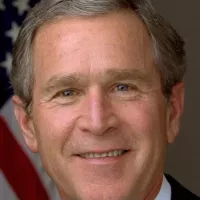
George W Bush the rd U S President - is...
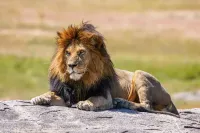
The lion Panthera leo is a large cat species native...
Qatar is a country located on the Qatar Peninsula in...
Africa is the second-largest and second-most populous continent comprising of...
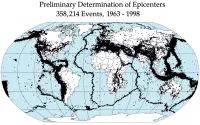
An earthquake is the shaking of the Earth's surface caused...
Trending
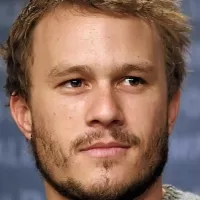
6 months ago Brokeback Mountain's 20th Anniversary: Challenging Hollywood and impacting audiences, starring Heath Ledger.
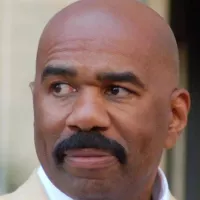
2 months ago Steve Harvey's Wild Reaction Causes Him to Drop Cards on Family Feud
Snoqualmie Pass is a mountain pass in Washington State serving as a crucial route for Interstate I- through the Cascade...
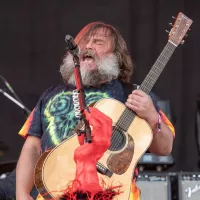
6 months ago Jack Black's Minecraft Movie Sets Premiere on HBO Max, June 20, 2025
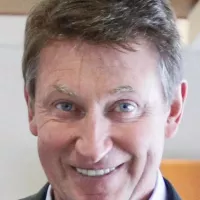
12 days ago McDavid and Draisaitl approach Gretzky's level, featuring in NHL's November top plays.
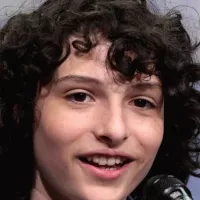
1 month ago Finn Wolfhard Teases 'Stranger Things' Finale: Bigger Than Imagined, Comparing It to Breaking Bad
Popular

Candace Owens is an American conservative political commentator and author...

Ilhan Omar is an American politician currently serving as the...

XXXTentacion born Jahseh Dwayne Ricardo Onfroy was a controversial yet...
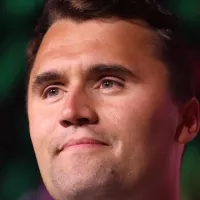
Charles James Charlie Kirk was a prominent American right-wing political...
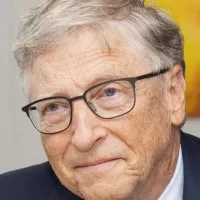
Bill Gates an American businessman and philanthropist revolutionized personal computing...
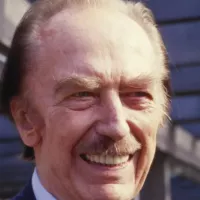
Frederick Christ Trump Sr - was an American real estate...